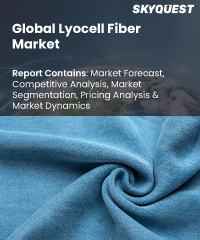
Report ID: SQMIG15A2262

Report ID:
SQMIG15A2262 |
Region:
Global |
Published Date: February, 2024
Pages:
237
|
Tables:
65 |
Figures:
75
A few large-scale manufacturers control the majority of the lyocell fiber market share globally. The majority of businesses invest a lot on research and development, especially to produce environmentally friendly products. Major techniques employed by prominent players include product portfolio diversification and mergers and acquisitions. The leading players in the lyocell fiber market include Lenzing AG, Grasim Industries Limited, Baoding Swan Chemical Fiber Group Co. ltd., Shanghai Lyocell Fiber Development Co., Ltd., and Smartfiber AG.
Lyocell Fiber Market Top Players Company Profiles
Lyocell Fiber Market Recent Development
Our industry expert will work with you to provide you with customized data in a short amount of time.
REQUEST FREE CUSTOMIZATIONLyocell Fiber Market size was valued at USD 1036.27 million in 2019 and is poised to grow from USD 1111.78 million in 2023 to USD 2096.12 million by 2031, growing at a CAGR of 7.3% in the forecast period (2024-2031).
Want to customize this report? This report can be personalized according to your needs. Our analysts and industry experts will work directly with you to understand your requirements and provide you with customized data in a short amount of time. We offer $1000 worth of FREE customization at the time of purchase.

Report ID: SQMIG15A2262